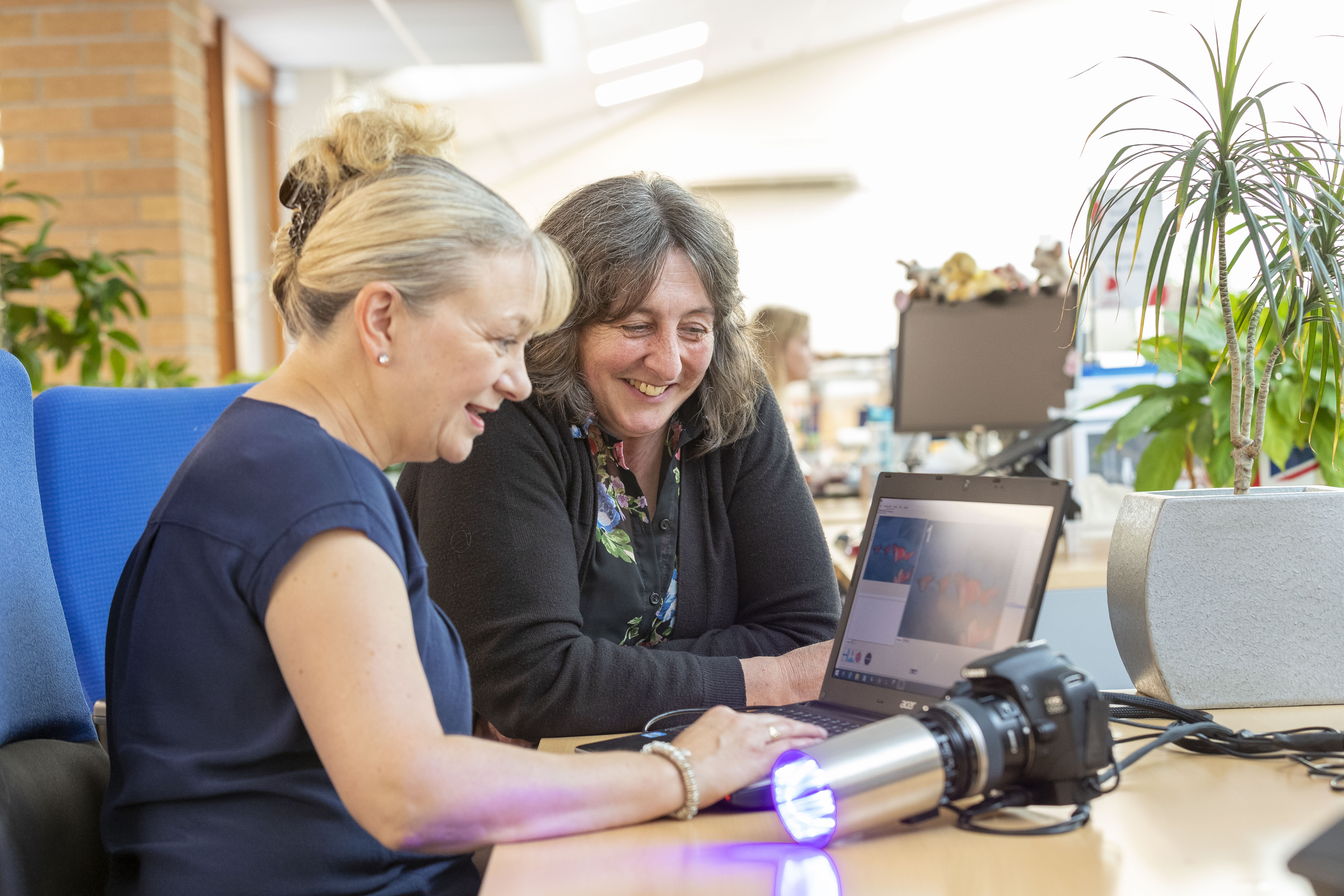Corrin Wallis
Shining a light on gum disease
Animals yes, but also the physics of light waves? It’s an unexpected combination, so how has her latest publication* come about?
For the last few years Dr Wallis has investigated the bacteria involved in gum disease in dogs. Whilst we brush our teeth to avoid gum disease it’s not always so easy to do the same for our pets. With estimates as high as 80% of dogs and 70% of cats affected by gum disease at some point in their lives it’s a major health issue. For the owner this may be perceived simply as bad breath but for your pet it comes with tooth ache and eventually loss of teeth.
To combat the disease the pet care industry develops diet based solutions to remove the plaque that triggers gum disease. Which is why Dr Wallis’ latest work set out to solve the problem of how can the industry as a whole, robustly compare how well each diet or treatment works in removing plaque. The ultimate goal is to drive the development of increasingly efficacious solutions and improve the lives of pets.

“The current method, modified Logan Boyce, requires trained scorers to estimate plaque levels on dogs or cats teeth," she explains. "Usually this is done before and after a test diet or treatment has been applied. It’s very subjective so the results of a study can be influenced by how each analyst scores the plaque”. In search of inspiration the team reviewed the literature and saw an early trial of a method to quantify caries (sugar based tooth decay) in humans. “Dogs don’t get caries because they lack the Streptococcal species that cause acid erosion but it peaked our interest”. A collaborative group from the UK and Netherlands were developing an approach called Quantitative Light Induced Fluorescence. It relies on identifying specific wavelengths of light which cause target organic compounds to fluoresce. In the case of dental plaque, the haem (an iron containing compound) in their outer membranes of certain bacteria fluoresces when exposed to light at 405nm. It’s the same principle that you see on the TV in CSI episodes where the haem in blood glows when they look for blood traces under blue light. In this case the fluorescence acts like a dentist’s disclosing solution and can be photographed. “The advantage of this approach is that the fluoresced colour is so different from the surrounding tissues a computer can easily identify and quantify it” adds Dr Wallis.
Working with researchers at the University of Liverpool she trialled the method in dogs and found it was possible to image plaque on their teeth. Then started a 2 year journey to develop and validate the method. Firstly training excitable miniature Schnauzers to happily sit still for their pictures. This was achieved by our behaviour and welfare team using positive reinforcement techniques. Then to speed up the analysis the team worked with Inspektor Research Systems team in the Netherlands to develop more efficient image analysis software. She could then compare it to Modified Logan Boyce which is the subject of her publication investigating the repeatability and reproducibility of the method. Repeatability refers to the variation you see if the same person used the system and reproducibility is the variability when different people use the system. For example reproducibility in the previous method may be high due to differences in how people estimate plaque levels. “It was essential that the method be reproducible as data collected by lots of different people across the pet care industry needed to be comparable”.
Initially the results from two methods appeared to be similar but further statistical analysis provided a pleasant surprise. “The reproducibility of our QLF method meant that compared to modified Logan Boyce only half as many dogs are needed to show a significant difference in plaque removal.” The added advantage to dogs is that she developed the method to test conscious dogs, the previous method required general anaesthesia. So the method takes two steps forward ethically, by reducing the number of dogs tested and reducing the impact on them.
So what’s next for the method? Whilst other companies have developed methods and patented them for competitive advantage “We took the decision to not only make it public but also to get endorsement from industry regulators. In this way the whole pet care industry can benefit and develop new solutions to improve the health of our pets”. Work is underway with the Veterinary Oral Health Council (VOHC) to endorse it as an industry standard testing method. The VOHC certify the efficacy of products with their Seal of Approval which vets rely on when choosing oral care solutions. Once in place future solutions will be tested both ethically and equally across the industry, a big win for our pets.
“I’m really proud of what we’ve achieved. It is always positively received when I’ve presented it at conferences and to industry regulators. Mainly because the audience also care for animals.”
Dr Corrin Wallis’ research publication list is both long and varied. Viruses, plant/microbe interactions and the genetics of aging all get a mention, but it’s her latest work that she is currently most enthusiastic about.





